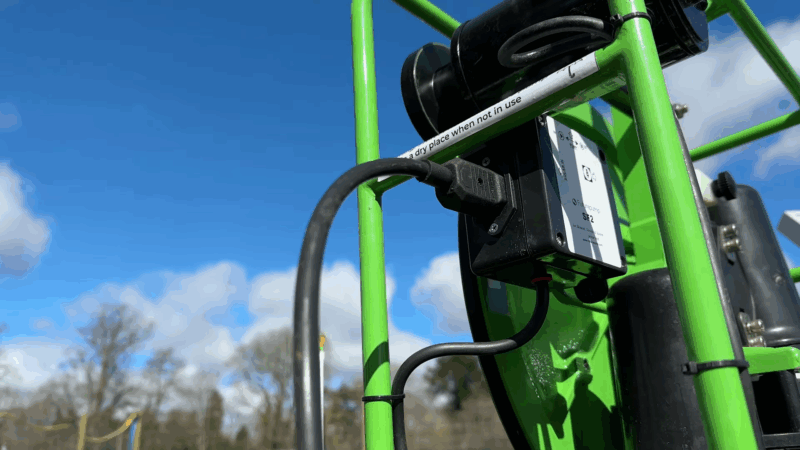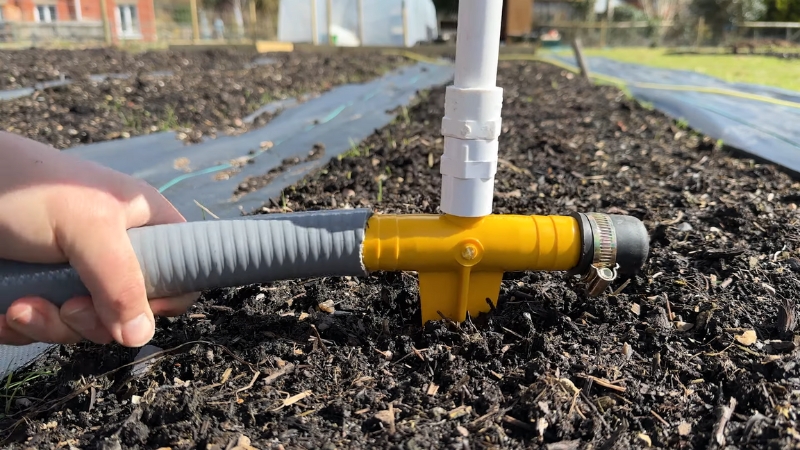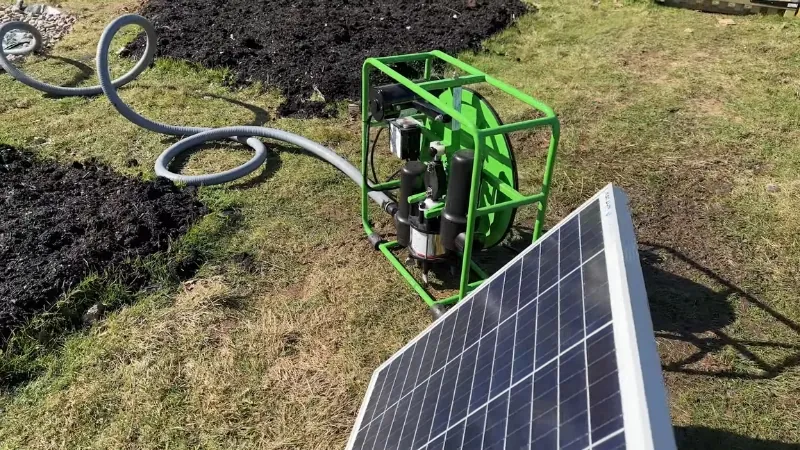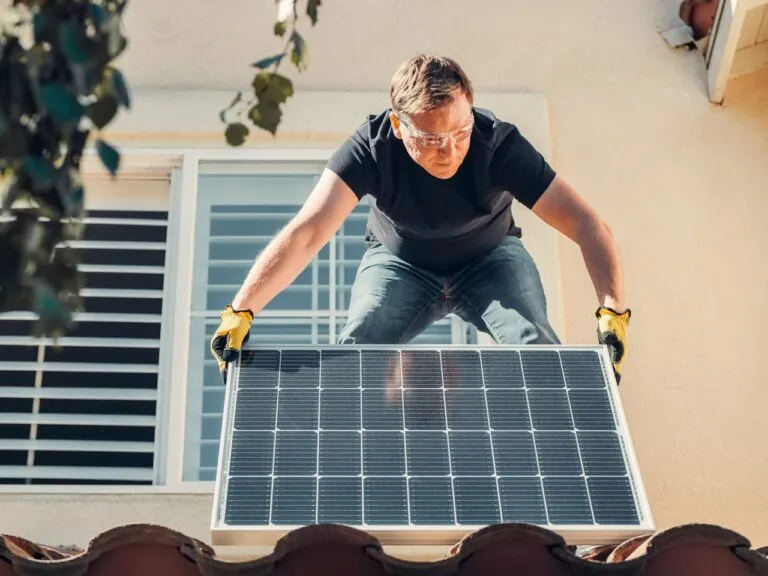Solar isn’t brand new, and neither is solar irrigation. But what has changed in the last few years is cost, efficiency, and scale.
A decade ago, the price tag on solar panels made small-scale setups feel out of reach unless you had grant money. Today? The average cost of a residential or small-farm solar system in the U.S. has dropped more than 60% since 2010.
Combine that with state-level rebates, USDA support programs, and the rising cost of diesel? Suddenly, solar starts penciling out, even for a few acres of vegetables.
Plus, solar tech has gotten a lot better at playing nice with pumps. We’re talking smart inverters that can handle variable water demands, battery systems that smooth out power bumps, and DC pumps that skip the whole conversion process altogether.
The Real-World Setup: What’s In a Solar Irrigation System?
The phrase “solar-powered irrigation” might conjure up something sleek and high-tech. And yeah, there’s cool stuff out there — but it doesn’t have to be complicated.
Here’s what a typical small-farm solar irrigation setup looks like:
Core Components
Component
What It Does
Solar Panels
Capture sunlight and convert it to electricity
Pump (AC or DC)
Moves water from the source (well, creek, tank) to the field
Controller/Inverter
Regulates voltage, starts/stops the pump as needed
Battery Bank (optional)
Stores energy for cloudy days or night irrigation
Mounting Structure
Keeps your panels facing the sun at the right angle
Piping/Drip Lines
Distributes water across the fields
Some farmers go lean: panels + DC pump + gravity-fed lines. Others build out a full system with trackers, automation, and monitoring apps. It all comes down to your water source, crop needs, and budget.
Case Study: A 5-Acre Veggie Farm in Arizona

Let’s look at what’s happening on the ground.
Sarah and Luis run a 5-acre farm outside Tucson. Hot climate. Water from a 180-foot well. Before solar, they were pumping with a gas generator that needed refueling every 6 hours.
Not fun. Plus, they hated the noise and fumes near their crops.
In 2022, they switched to a solar-powered system:
Total cost after rebates? Around $7,000. Not nothing, but the USDA’s REAP program covered 40%. They made up the rest with a state AG grant and some crowdfunding.
Now they pump early in the day, store water in a 2,000-gallon tank, and irrigate on a timer. No gas. No hauling. And they say they’ll break even by next season.
The Big Perks (And a Few Caveats)
So, what’s to love about solar-powered irrigation — and where should you keep your eyes open?
The Upside
- Zero fuel cost: Once it’s up and running, the sun is free.
- Low maintenance: Fewer moving parts than a combustion engine.
- Scalable: Start small and add panels or pumps as needed.
- Quiet operation: Big deal for rural areas, pollinator crops, or farms with nearby housing.
- Good for remote fields: No need to run power lines or lug a generator around.
The Hiccups
- Upfront costs: Even with rebates, the initial install can sting.
- Storage matters: If you need water early morning or after sunset, batteries or storage tanks are a must.
- Seasonal shifts: Shorter winter days = less pumping power. You’ve gotta plan for that.
- Repair logistics: Some parts (like inverters) might take time to replace if you’re not near a major supplier.
Key Tips If You’re Considering Solar Irrigation
View this post on Instagram
Thinking about it? Here are a few grounded, practical tips that could save you time and money:
1. Know Your Water Source
- Deep wells need more power (and pressure) than surface pumps.
- Measure your “dynamic head” — that’s the vertical lift + friction losses. It matters a lot for choosing the right pump.
2. Start with Your Irrigation Plan
- How much water do your crops need per day during peak season?
- Match that to your solar pump’s flow rate — gallons per minute/hour.
- Oversize the panels a bit — better too much than too little.
3. Use a Tank as Your Buffer
- A tank gives you flexibility: pump when the sun shines, irrigate when you want.
- It also reduces wear on your pump and lets you go without batteries in many cases.
4. Apply for Support
- USDA REAP grants can cover up to 50% for renewable energy on farms.
- Many state ag departments offer small grants or low-interest loans.
- Some electric co-ops offer rebates even if you’re off-grid.
5. Get Help Designing the System
- Plenty of solar suppliers overpromise and underdeliver.
- Work with someone who understands both AG and solar, not just rooftop installers.
Recommended Equipment for Small Farms

Here’s a no-nonsense list of solar irrigation components that small farm operators consistently recommend:
Category
Good Starter Options
Notes
Solar Panels
REC, Q-Cells, Canadian Solar
Go for high-efficiency monocrystalline
Pumps
Lorentz PS2, Grundfos SQFlex, Dankoff Solar
Choose based on lift, flow rate, and DC vs AC needs
Controllers
MidNite Solar, Lorentz Controller
Smart controllers save headaches
Batteries
SimpliPhi, Battle Born (LiFePO4)
Optional but useful for off-peak pumping
Tanks
Norwesco, Bushman
Look for UV-stable, food-grade tanks
Drip Supplies
Netafim, Toro Ag, Jain Irrigation
Drip is your best friend with limited water
Keep in mind, tech changes fast — new options come out every year. But these names have held up well under real-world use.
What About Leasing or Community Solar?
If buying your own system sounds like too much right now, you’ve got a couple of other options:
Worth exploring if you’re not ready to go all-in.
Where Things Are Headed
Solar technologies, including solar-powered irrigation systems and solar dryers, have the potential to greatly enhance agricultural practices. Nevertheless, the substantial costs linked to the purchase of these technologies frequently serve as an impediment for small-scale… pic.twitter.com/SDIfMzzAT9
— The Innovation Village (@TheVillageUG) October 4, 2023
The solar irrigation scene isn’t slowing down. With water getting scarcer and energy prices bouncing around, small farms are being pushed to do more with less, and solar’s becoming one of the more sane paths forward.
Expect to see more hybrid systems (solar + grid + batteries), smarter controls with weather forecasting built in, and — fingers crossed — even better incentives from federal and state programs.
If there’s one thing you take from all this, let it be this: You don’t need to overhaul your entire farm to start benefiting from solar. Even a modest setup can save you time, reduce costs, and make the daily grind just a little bit easier.
Final Thoughts
Solar-powered irrigation isn’t a silver bullet, but it’s a solid tool, especially for smaller growers looking to work smarter. It’s about independence. About cutting noise and fuel costs. And yeah, it doesn’t hurt that it’s a cleaner way to run things.
So, whether you’re running a few acres of greens or managing orchards in the back forty, solar might be worth a second look. Talk to your local extension office. Call up a solar-friendly ag supplier. Kick the tires.
No pressure, just options.











